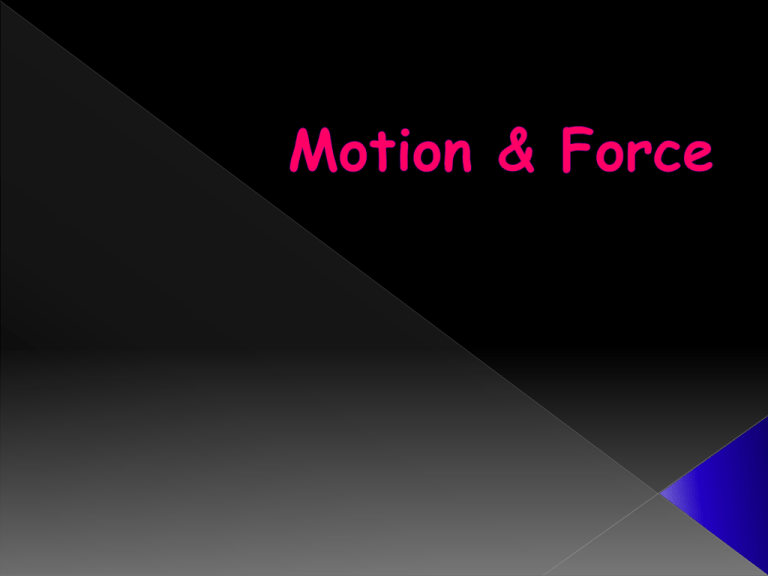Motion and Force
advertisement

Describe how forces act upon objects and create motion Describe how friction influences the motion Explain the different types of friction Explain why friction is important Is an _____ exerted on an object in order to change the object’s ________ or ______ A push or pull in other words It has magnitude & direction What does that mean? Force can be balanced or unbalanced Unbalanced Forces Balanced Forces Balanced forces occur when the forces applied to an object produce a net force of zero They do not cause a change in the motion of an object or move an object out of rest Example: a hat on your head Unbalanced forces occur when forces do not cancel out completely They cause a change in the motion of an object Because the net force is greater than zero the object will accelerate in the direction of the greater force Friction is the force that opposes motion between 2 surfaces that are in contact Friction happens because the surface of any object is rough (microscopically speaking) Friction opposes the applied force on an object Friction also affects objects that aren’t moving When a car is accelerating, the forces are __________________ › The force moving the car forward is greater than the opposing force of friction When a car is cruising at a constant speed, the force moving the car forward is ___________ by the force of friction Balanced forces could also mean that the car is not in motion Kinetic Friction Is the force of friction against an object already in ______ There are different kinds of kinetic friction › Sliding friction › Rolling friction › Fluid friction Static Friction Is the force of friction opposing the initial movement of an object from ________________ It is _______ than kinetic force ___________ is the friction that occurs between objects that are sliding past each other ____________ is the friction of a round object rolling over a flat surface › It is usually less than sliding friction ___________ is the friction of a moving object traveling through a fluid (a liquid or a gas) › It can be minimized by very smooth surfaces › When air is the fluid, the force of friction is called ___________ Why is friction important? How can friction cause problems? 1. Using lubricants such as motor oil, wax and grease › Lubricants are usually liquids but can be solids or gases 2. Replacing sliding friction with rolling friction › Such as using ball bearings between wheels and axles 3. Make surfaces smoother 1. Making surfaces rougher 2. Increase the force pushing the surfaces together




